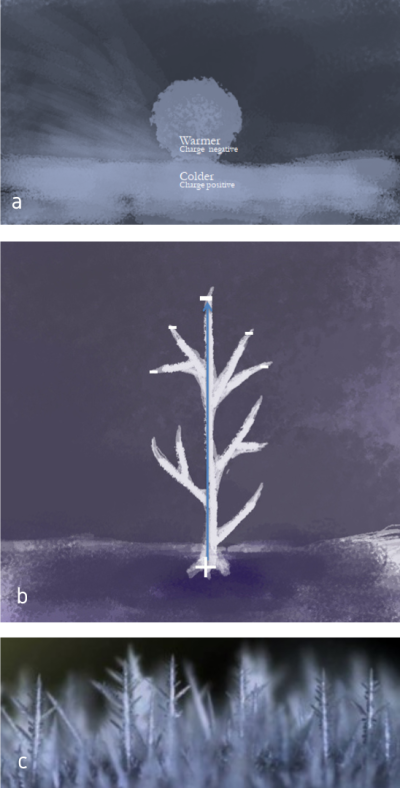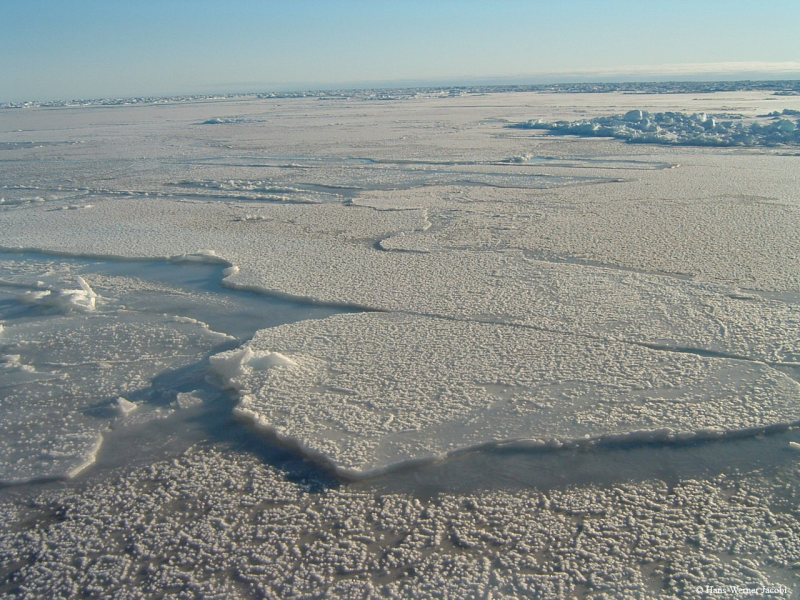Unveiling the electrifying secrets of polar snow and ice : a paradigm shift in atmospheric chemistry ?
The Earth’s polar regions continue to be a hotbed of unexpected atmospheric chemistry phenomena. Although these regions are far away from sources of anthropogenic pollution, these substances can accumulate in the snow and ice. In addition, there are phenomena such as the complete, yet widespread depletion of ground-level ozone occurring only there has intrigued scientists for decades. Now, an innovative manuscript, "Electrical charging of snow and ice in polar regions and the potential impact on atmospheric chemistry" challenges existing paradigms in atmospheric chemistry occurring in polar regions. Authored by from the Ukrainian Academy of Sciences and Hans-Werner Jacobi from the institut des géosciences de l’environnement (IGE- OSUG) [1], this comprehensive review delves into unexplored territory, uncovering a potential, yet significant impact of electrical charging on chemical processes in polar snow and ice.
Traditionally, ice physics and atmospheric electrification focused on the ice-vapor interface, overlooking potential chemical implications in polar regions. The manuscript reveals how Earth’s surface processes induce electrification in snow, exceeding electric field strength thresholds. This likely triggers corona discharges, Rayleigh jets, and accumulates electrical charges, fostering chemical modifications like electroosmotic phenomena and impurity accumulation. Microsecond "hot spots" generate highly energetic states, initiating free radical processes and charged aerosol production. The manuscript challenges prevailing notions, emphasizing electrostatic forces’ role in explaining long-debated phenomena. It opens innovative avenues for chemical transformations during traditionally unfavorable meteorological conditions, potentially revolutionizing our understanding of polar atmospheres.
The study analyzes field observations, unraveling inconsistencies in current snow and ice chemistry understanding. Innovative approaches for field and lab experiments are presented, promising a new era at the crossroads of ice physics and snow chemistry, enhancing our understanding of cryospheric chemical processes.
This groundbreaking achievement is the result of the collaborative efforts of Katya Tkachenko from the Ukrainian Academy of Sciences and Hans-Werner Jacobi from IGE. Strengthened significantly since 2022, when Katya Tkachenko assumed the role of an invited scientist at the University Grenoble Alpes, their collaboration has been further bolstered by the support of the PAUSE program from the College de France.

b. A schematic presentation of a frost flower as an example of an ice structure with a very sharp tip leading to a negative charge on the tip of the structure.
c. Image of real frost flowers for comparison.”
Reference
Kateryna Tkachenko and Hans-Werner Jacobi, Electrical charging of snow and ice in polar regions and the potential impact on atmospheric chemistry, Environmental Science : Atmospheres, DOI : 10.1039/D3EA00084B
Contact scientifique
– Hans-Werner Jacobi, researcher CNRS at the institut des géosciences de l’environnement (IGE - OSUG)
[1] CNRS, INRAE, IRD, Univ Grenoble Alpes, Grenoble INP - UGA
 The federation
The federation Intranet
Intranet








